Turbulence Effect of Urban-Canopy Flow on Indoor Velocity Fields under Sheltered and Cross-Ventilation Conditions
Abstract
1. Introduction
2. Methodology
2.1. Experimental Setup
2.2. Measurement
3. Results
3.1. Mean Flow Field
3.2. Temporal Correlation of Indoor and Outdoor Wind Speeds
4. Conclusions
Author Contributions
Funding
Institutional Review Board Statement
Informed Consent Statement
Data Availability Statement
Acknowledgments
Conflicts of Interest
References
- Seifert, J.; Li, Y.; Axley, J.; Rösler, M. Calculation of wind-driven cross ventilation in buildings with large openings. J. Wind Eng. Ind. Aerodyn. 2006, 94, 925–947. [Google Scholar] [CrossRef]
- Asfour, O.S.; Gadi, M.B. A comparison between CFD and Network models for predicting wind-driven ventilation in buildings. Build. Environ. 2007, 42, 4079–4085. [Google Scholar] [CrossRef]
- Jiang, Y.; Alexander, D.; Jenkins, H.; Arthur, R.; Chen, Q. Natural ventilation in buildings: Measurement in a wind tunnel and numerical simulation with large-eddy simulation. J. Wind Eng. Ind. Aerodyn. 2003, 91, 331–353. [Google Scholar] [CrossRef]
- Hiyama, K.; Kato, S.; Takahashi, T.; Kono, R. Study on effect of opening area ratio and relative opening location on air flow characteristics in cross-ventilation models. J. Environ. Eng. (Trans. AIJ) 2005, 70, 21–27. [Google Scholar] [CrossRef]
- Kasim, N.F.M.; Zaki, S.A.; Ali, M.S.M.; Ikegaya, N.; Razak, A.A. Computational study on the influence of different opening position on wind-induced natural ventilation in urban building of cubical array. Procedia Eng. 2016, 169, 256–263. [Google Scholar] [CrossRef]
- Zaki, S.A.; Kasim, N.F.M.; Ikegaya, N.; Hagishima, A.; Ali, M.S.M. Numerical simulation on wind-driven cross ventilation in square arrays of urban buildings with different opening positions. J. Adv. Res. Fluid Mech. Therm. Sci. 2018, 49, 101–114. [Google Scholar]
- Ohba, M.; Irie, K.; Kurabuchi, T. Study on airflow characteristics inside and outside a cross-ventilation model, and ventilation flow rates using wind tunnel experiments. J. Wind Eng. Ind. Aerodyn. 2001, 89, 1513–1524. [Google Scholar] [CrossRef]
- Kotani, H.; Sagara, K.; Yamanaka, T. Airflow field analysis around the building during ventilation by PIV. J. Vis. Inf. Soc. 2009, 29, 18–24. [Google Scholar]
- Karava, P.; Stathopoulos, T.; Athienitis, A.K. Airflow assessment in cross-ventilated buildings with operable façade elements. Build. Environ. 2011, 46, 266–279. [Google Scholar] [CrossRef]
- Arinami, Y.; Akabayashi, S.; Takano, Y.; Tominaga, Y.; Sakaguchi, A. Visualization and measurements for fluctuating cross ventilation airflow in simple house model using large-size boundary layer wind tunnel: Study on PIV measurement and analysis for room air flow distribution Part 2. J. Environ. Eng. (Trans. AIJ) 2015, 80, 127–137. [Google Scholar] [CrossRef]
- Bangalee, M.Z.I.; Miau, J.J.; Lin, S.Y.; Yang, J.H. Flow visualization, PIV measurement and CFD calculation for fluid-driven natural cross-ventilation in a scale model. Energy Build. 2013, 66, 306–314. [Google Scholar] [CrossRef]
- Shirzadi, M.; Mirzaei, P.A.; Naghashzadegan, M. Development of an adaptive discharge coefficient to improve the accuracy of cross-ventilation airflow calculation in building energy simulation tools. Build. Environ. 2018, 127, 277–290. [Google Scholar] [CrossRef]
- Tominaga, Y.; Blocken, B. Wind tunnel experiments on cross-ventilation flow of a generic building with contaminant dispersion in unsheltered and sheltered conditions. Build. Environ. 2015, 92, 452–461. [Google Scholar] [CrossRef]
- Hasegawa, Z. Winds of Buildings with Openings in the Urban Turbulent Boundary Layer: PIV Measurement. Master’s Thesis, Kyushu University, Fukuoka, Japan, 2018. [Google Scholar]
- Van Hooff, T.; Blocken, B.; Tominaga, Y. On the accuracy of CFD simulations of cross-ventilation flows for a generic isolated building: Comparison of RANS, LES and experiments. Build. Environ. 2017, 114, 148–165. [Google Scholar] [CrossRef]
- Ikegaya, N.; Hasegawa, S.; Hagishima, A. Time-resolved particle image velocimetry for cross-ventilation flow of generic block sheltered by urban-like block arrays. Build. Environ. 2019, 147, 132–145. [Google Scholar] [CrossRef]
- Ikegaya, N.; Morishige, S.; Matsukura, Y.; Onishi, N.; Hagishima, A. Experimental study on the interaction between turbulent boundary layer and wake behind various types of two-dimensional cylinders. J. Wind Eng. Ind. Aerodyn. 2020, 204, 104250. [Google Scholar] [CrossRef]
- Coceal, O.; Thomas, T.G.; Castro, I.P.; Belcher, S.E. Mean flow and turbulence statistics over groups of urban-like cubical ob-stacles. Bound. -Layer Meteorol. 2006, 121, 491–519. [Google Scholar] [CrossRef]
- Lin, M.; Hang, J.; Li, Y.; Luo, Z.; Sandberg, M. Quantitative ventilation assessments of idealized urban canopy layers with various urban layouts and the same building packing density. Build. Environ. 2014, 79, 152–167. [Google Scholar] [CrossRef]
- Razak, A.A.; Hagishima, A.; Ikegaya, N.; Tanimoto, J. Analysis of airflow over building arrays for assessment of urban wind environment. Build. Environ. 2013, 59, 56–65. [Google Scholar] [CrossRef]
- Kim, Y.C.; Tamura, Y.; Yoon, S.-W. Proximity effect on low-rise building surrounded by similar-sized buildings. J. Wind Eng. Ind. Aerodyn. 2015, 146, 150–162. [Google Scholar] [CrossRef]
- Zaki, S.A.; Hagishima, A.; Tanimoto, J. Experimental study of wind-induced ventilation in urban building of cube arrays with various layouts. J. Wind Eng. Ind. Aerodyn. 2012, 103, 31–40. [Google Scholar] [CrossRef]
- Ikegaya, N.; Hirose, C.; Hagishima, A.; Tanimoto, J. Effect of turbulent flow on wall pressure coefficients of block arrays within urban boundary layer. Build. Environ. 2016, 100, 28–39. [Google Scholar] [CrossRef]
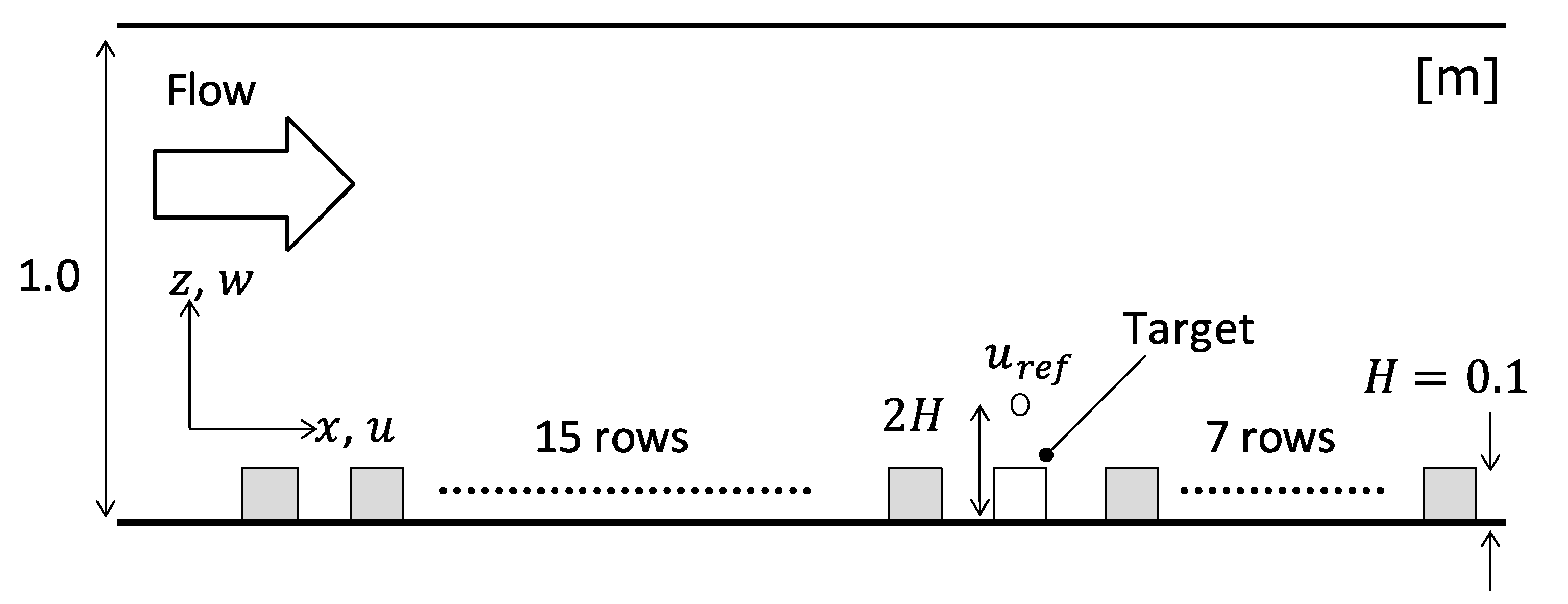
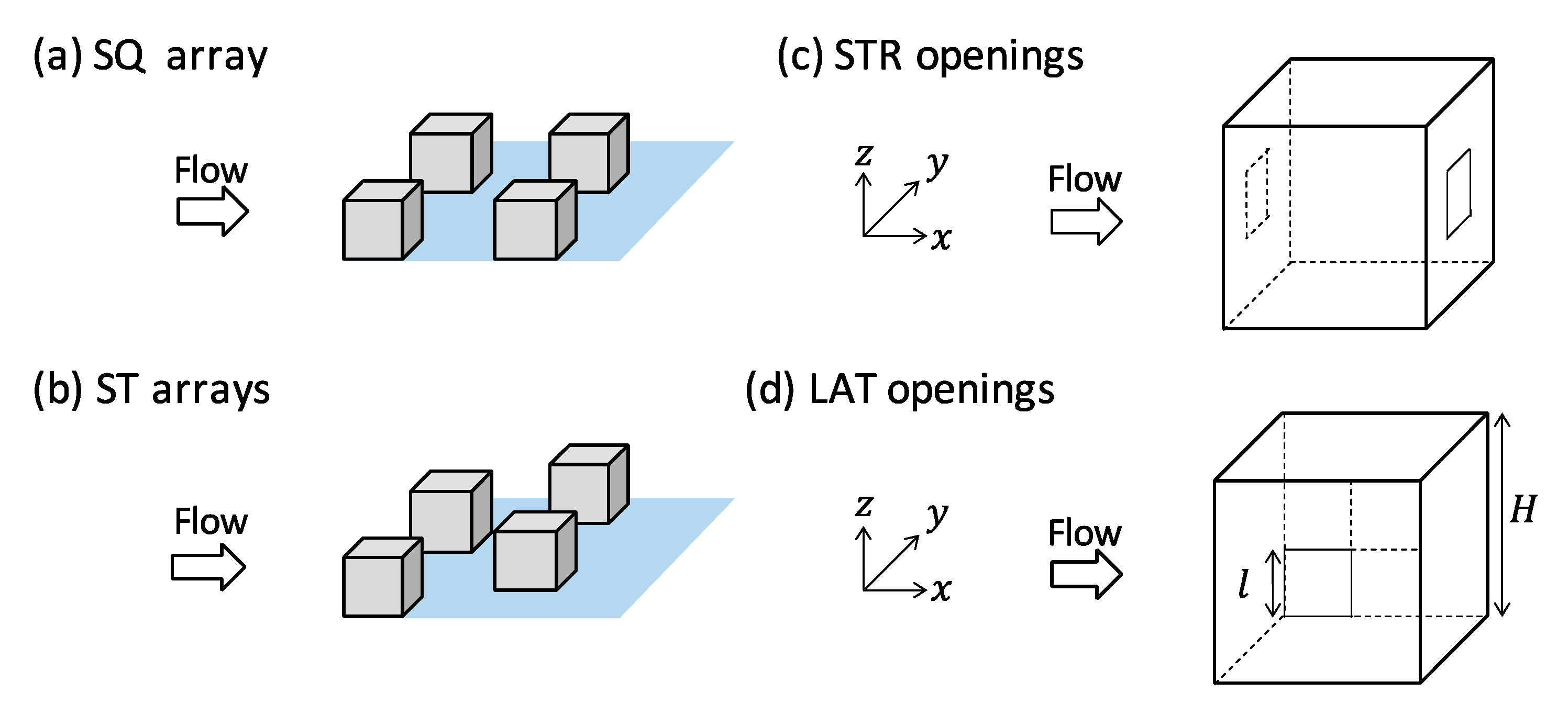

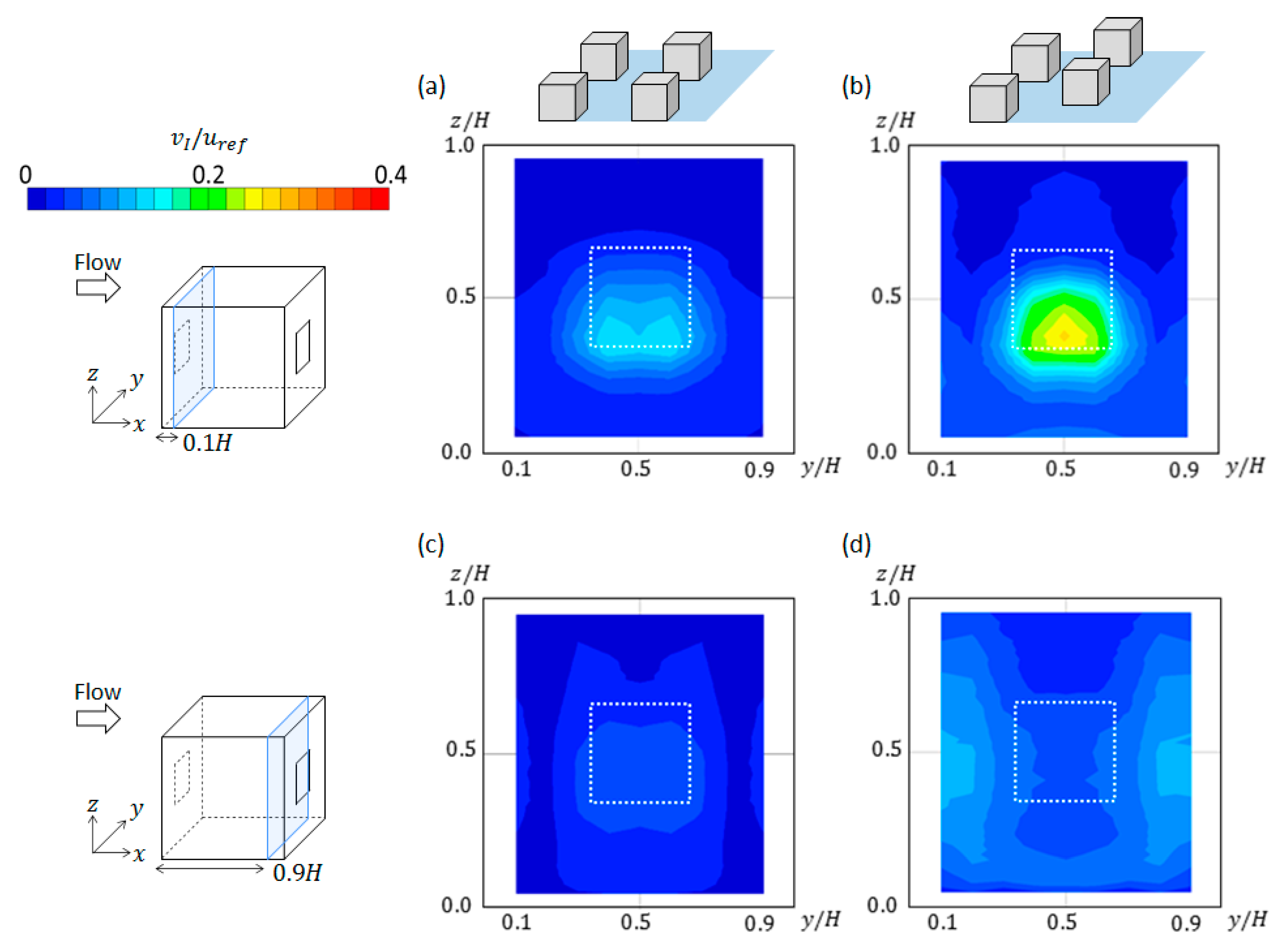
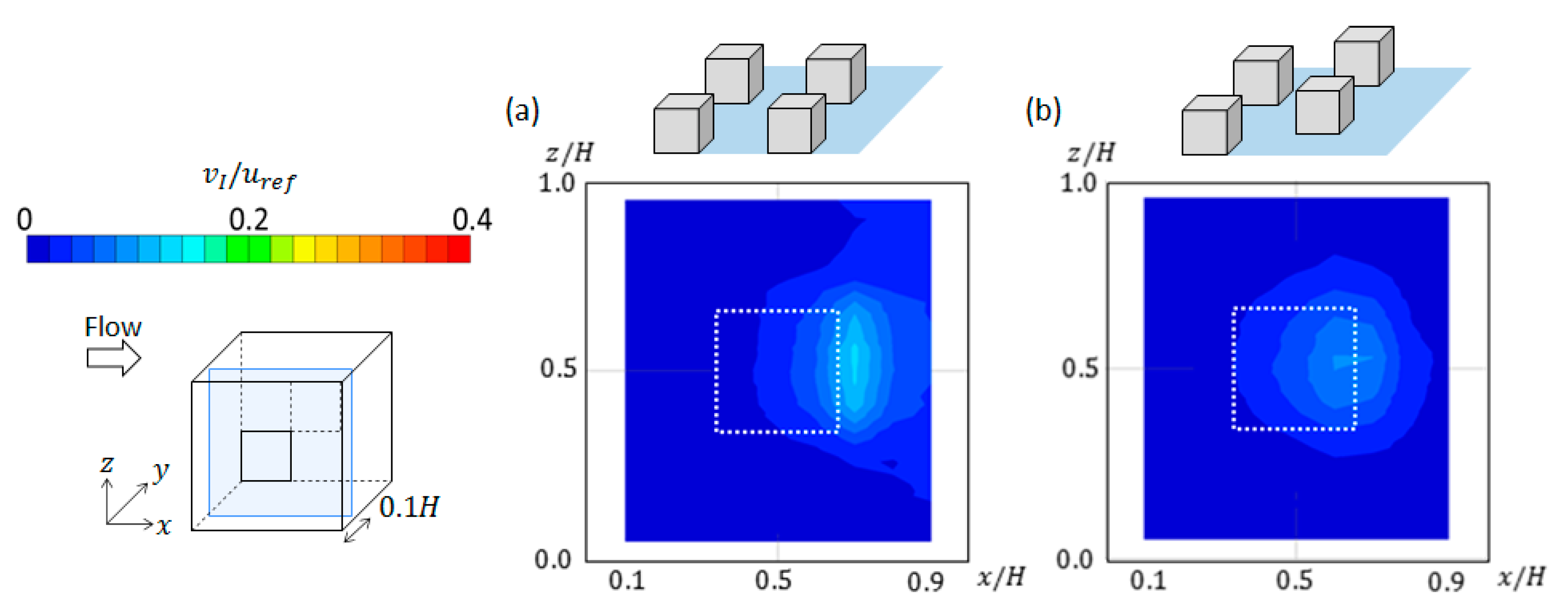
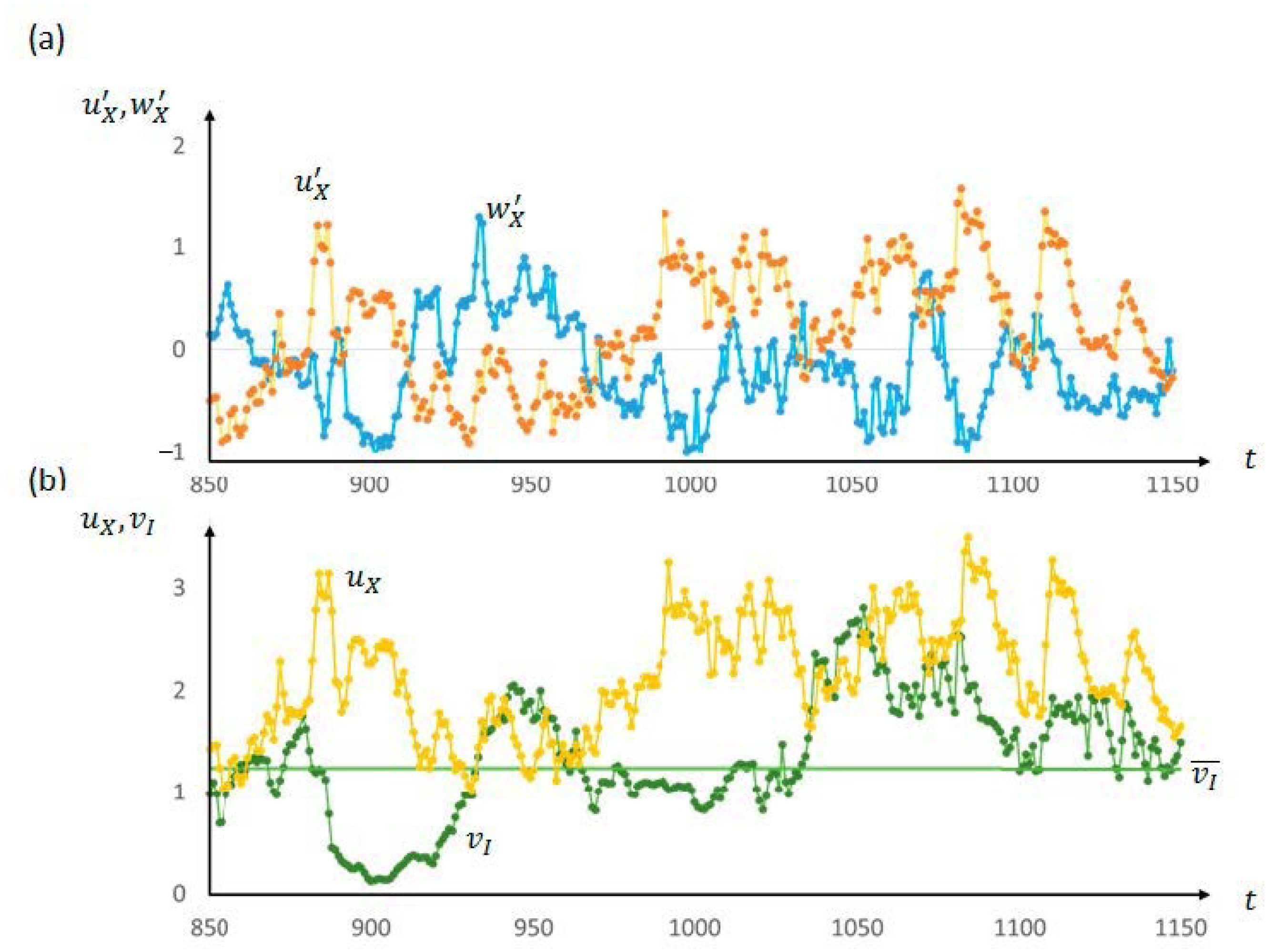
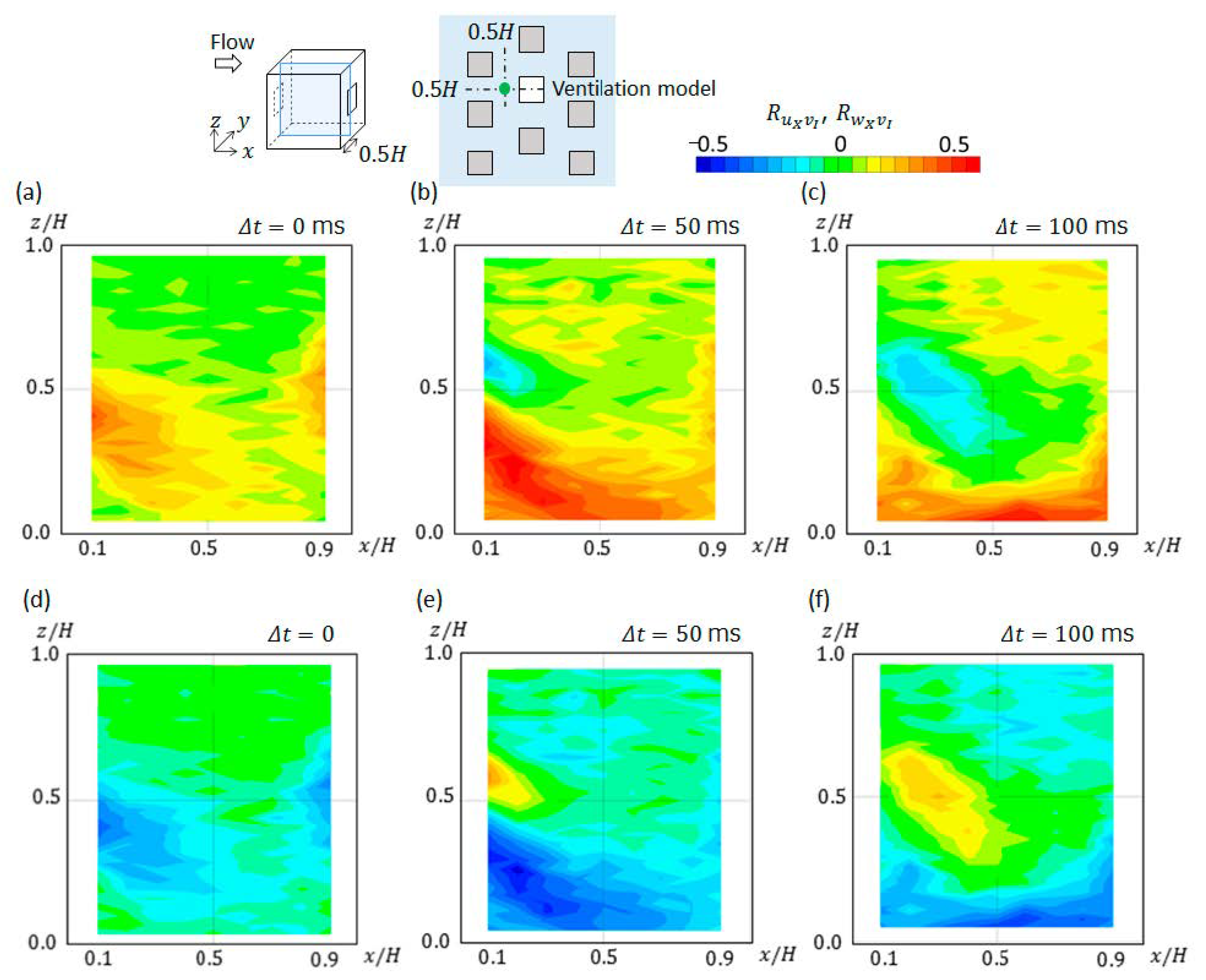
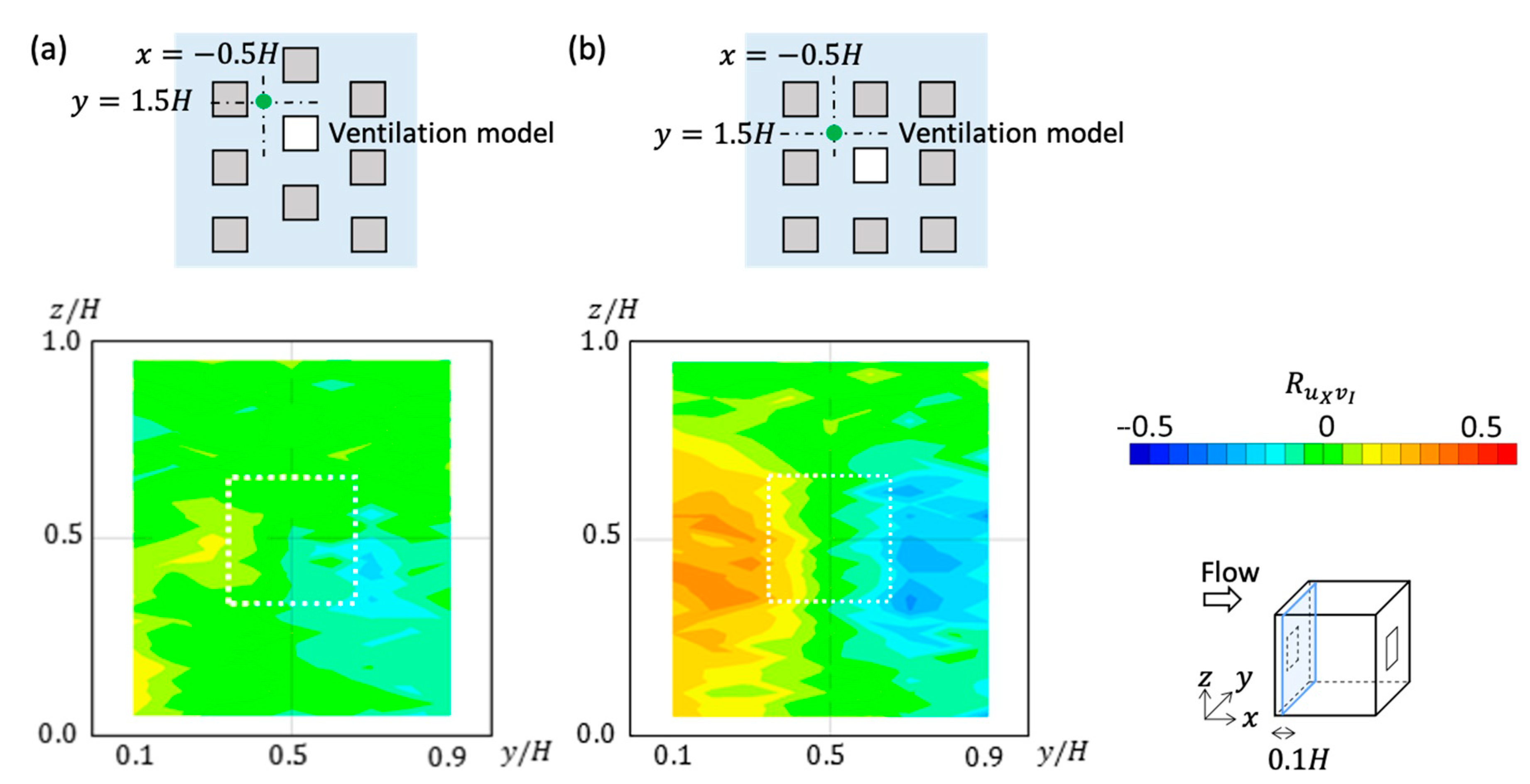
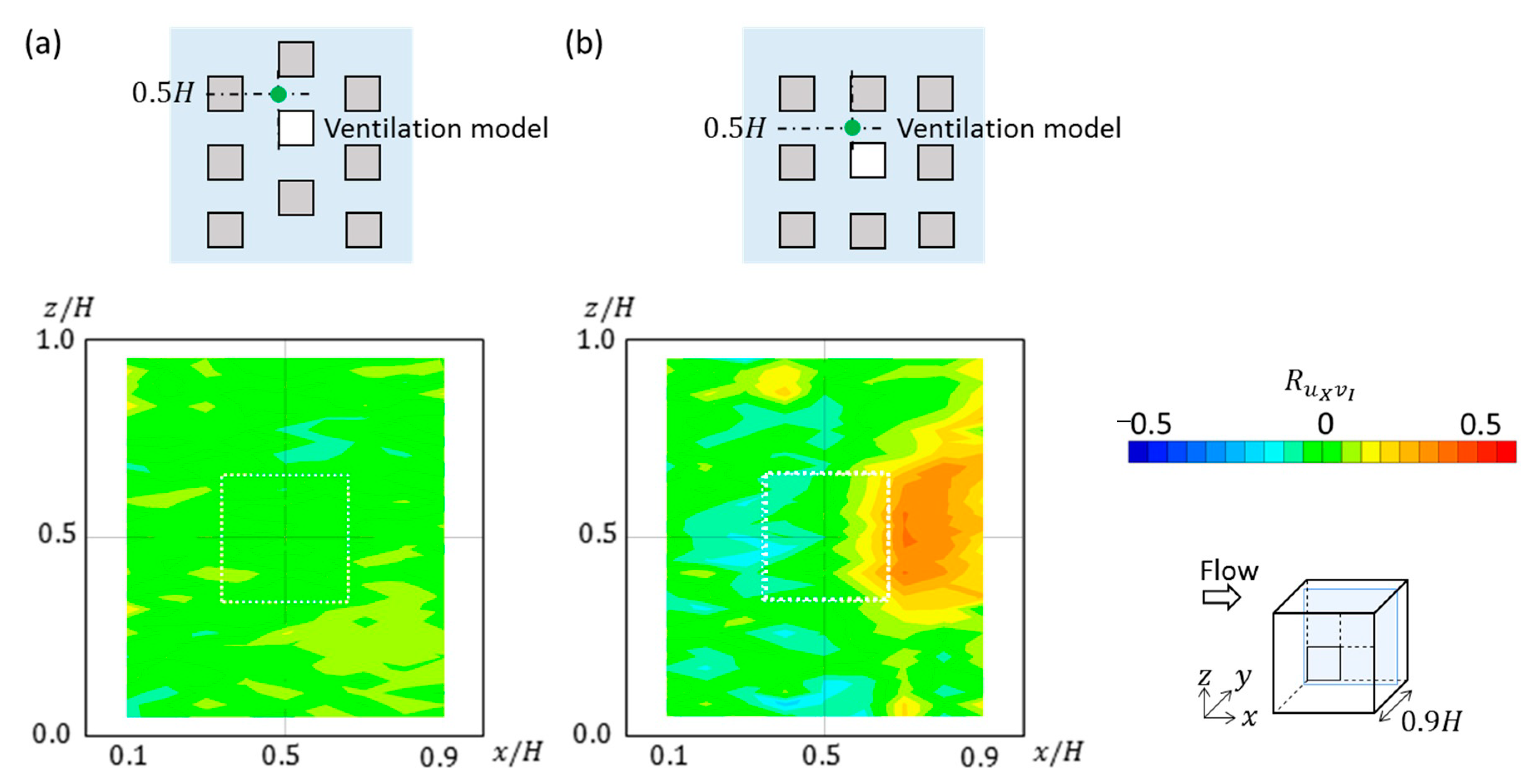

Publisher’s Note: MDPI stays neutral with regard to jurisdictional claims in published maps and institutional affiliations. |
© 2021 by the authors. Licensee MDPI, Basel, Switzerland. This article is an open access article distributed under the terms and conditions of the Creative Commons Attribution (CC BY) license (http://creativecommons.org/licenses/by/4.0/).
Share and Cite
Mohammad, A.F.; Ikegaya, N.; Hikizu, R.; Zaki, S.A. Turbulence Effect of Urban-Canopy Flow on Indoor Velocity Fields under Sheltered and Cross-Ventilation Conditions. Sustainability 2021, 13, 586. https://doi.org/10.3390/su13020586
Mohammad AF, Ikegaya N, Hikizu R, Zaki SA. Turbulence Effect of Urban-Canopy Flow on Indoor Velocity Fields under Sheltered and Cross-Ventilation Conditions. Sustainability. 2021; 13(2):586. https://doi.org/10.3390/su13020586
Chicago/Turabian StyleMohammad, Ahmad Faiz, Naoki Ikegaya, Ryo Hikizu, and Sheikh Ahmad Zaki. 2021. "Turbulence Effect of Urban-Canopy Flow on Indoor Velocity Fields under Sheltered and Cross-Ventilation Conditions" Sustainability 13, no. 2: 586. https://doi.org/10.3390/su13020586
APA StyleMohammad, A. F., Ikegaya, N., Hikizu, R., & Zaki, S. A. (2021). Turbulence Effect of Urban-Canopy Flow on Indoor Velocity Fields under Sheltered and Cross-Ventilation Conditions. Sustainability, 13(2), 586. https://doi.org/10.3390/su13020586





